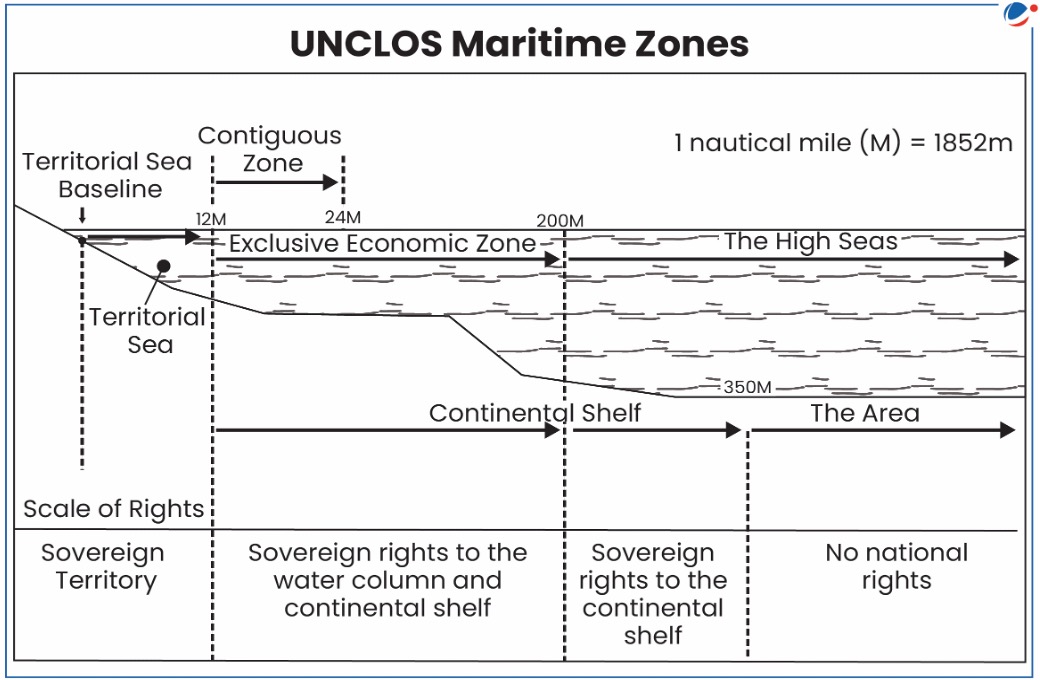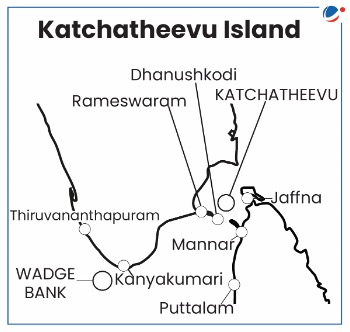Why in the news?
Sri Lankan fishermen protested against their Indian counterparts for their alleged poaching in the Sri Lankan waters by sailing to the International Maritime Boundary Line (IMBL).
More on the news
- The problem has three interrelated facets: disagreements over Kachchatheevu island; poaching by Indian fishermen in Sri Lankan waters; and their use of trawlers that causes environmental damage.
- While Indian fishermen believe they are simply fishing in their traditional grounds, particularly around Katchatheevu, Sri Lanka accuses them of trespassing into its territorial seas.
- Indian fishermen claim that climate change and depletion of fish stocks on the Indian side of the IMBL have driven them to sail farther out to sea.
- In 2023, 240 Indian fishermen were arrested for alleged poaching in Sri Lankan waters, followed by the seizure of 35 trawlers.
About International Maritime Boundary Line (IMBL)
- The India-Sri Lanka IMBL was delineated by the 1974 Maritime boundary agreement demarcating it in the Palk Strait.
- It was determined based on principles under United Nations Convention on the Law of the Sea (UNCLOS).
- According to UNCLOS, Maritime boundaries are often defined by the equidistance principle, which asserts that a nation's marine boundary should follow a medial line equidistant from the coastal areas of two neighbouring countries.
- This boundary is established to define each country's exclusive economic zones, territorial waters, and other maritime zones, helping to prevent disputes and conflicts over maritime jurisdiction.

|






